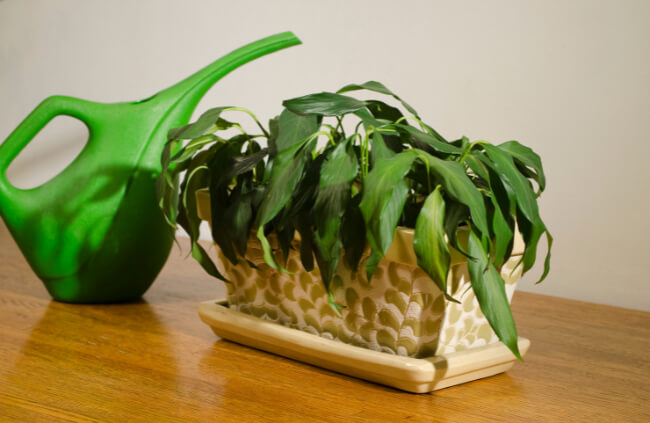Could there be anything worse for a gardener to find their favourite blooms having succumbed to plant wilt? Maybe. Perhaps finding a deer (or a kangaroo) eating your prized peonies could be a little distressing. Or, just looking up as your 3-year-old snips the single bud off your chrysanthemum that was destined for glory at the local show.
These things could certainly test your patience but unlike these scenarios plant wilt can be avoided in most cases.
More...
Common Reasons Why Plants Wilt
For many beginner gardeners our desire to succeed and see our plants do well can actually be the reason they die. Too much TLC and love and attention is harmful and can be fatal. So, why do plants wilt and what can be done to minimise the risk.
Overwatering Plants

This is a common mistake with growing indoor plants. We often water them the same as we would those growing outdoors but forget that evaporation is much lower inside. So plants end up sitting in very moist soil and their roots begin to struggle.
Overwatering is also a common mistake early in Spring as gardeners adjust to their plant’s requirements. We’re eager to see them grow so we begin watering a little too early.
Lack of Water
The flip side of the first problem is not watering them enough. If your plants are wilting because the soil has become too dry, then the obvious solution is to begin watering them and keep this constant until the plant picks up again.
Container plants have a knack of drying out quicker than those growing in the ground. So, the best way to resuscitate your pot plants is to plunge them into a bucket of water and hold them until all the air bubbles have subsided.
Note: this is only for extreme cases.
Plants Receiving Too Much Sun
Plant wilt often happens when you’re growing them in the wrong position or if indoors, the plant is too close to a window. Too much sun for a shade loving plant is like too much social activity for an introvert.
If outdoors, try moving your plant to another garden bed where it is less likely to be scorched by the sun’s rays. Indoor plants may need to be moved away from the window but still where it can receive some indirect sunlight.

Plant with Not Enough Sun
And this ties in with the overwatering idea. Plants wilt sometimes because they’re not receiving enough sunlight. Picture an extrovert confined to a cubicle office space every day and you’ll understand the problem. The answer, again, is to move them.
Rootbound Plants
Often plants can outgrow their containers if they’re not transplanted every year or two. Once a plant gets too large for its pot it struggles to draw nutrients and moisture from the soil – if there is any left, that is.
The answer is to repot your plant into a larger container and use some quality potting mix as its growing medium.
Too Much Fertiliser
Overzealous gardeners can cause plant wilts just by feeding it too much. When adding fertiliser to a plant’s growing medium, whether it be soil or potting mix, take into account the size of the plant and when you last fed it. Plants don’t usually become obese, they just die.


Get Your Free Guide:
Master Growing Australian Natives eBook
A Must Have Complete Guide for Every Australian Garden
Get Your Free Guide:
Master Growing Australian Natives eBook
A Must Have Complete Guide for Every Australian Garden
Try using slow-release fertilisers where possible and usually they should only be added at the start of the growing season and again during flowering times.
Plant Diseases
Plants can often wilt because of an infection as well. There are a few main types of plant wilt related to disease, namely – Fusarium wilt which is a fungal disease common to cotton, tomatoes, and palms.
This type of wilt can be controlled via a fungicide which should be used as per the directions. Other forms are Bacterial wilt and Verticillium wilt.
So, finding your favourite plant wilt doesn’t mean it’s the end of it. There are some things you can do to try and save all your effort and hopefully turn your plant around so that it blooms another day.
Published on June 4, 2023 by Gary Clarke
Last Updated on September 19, 2024




